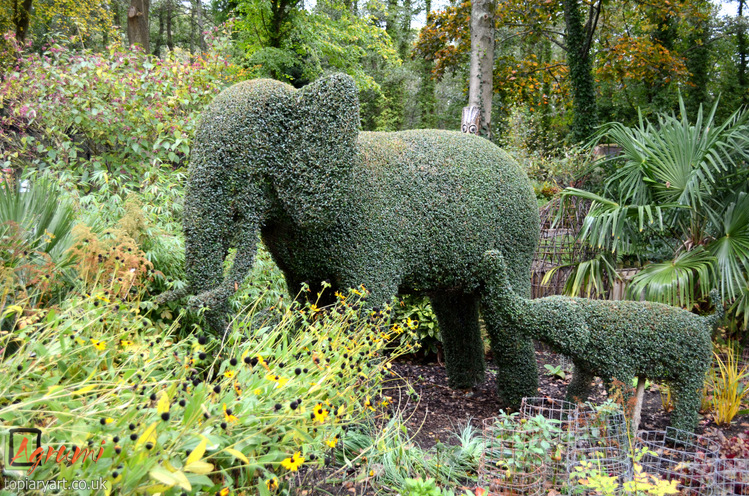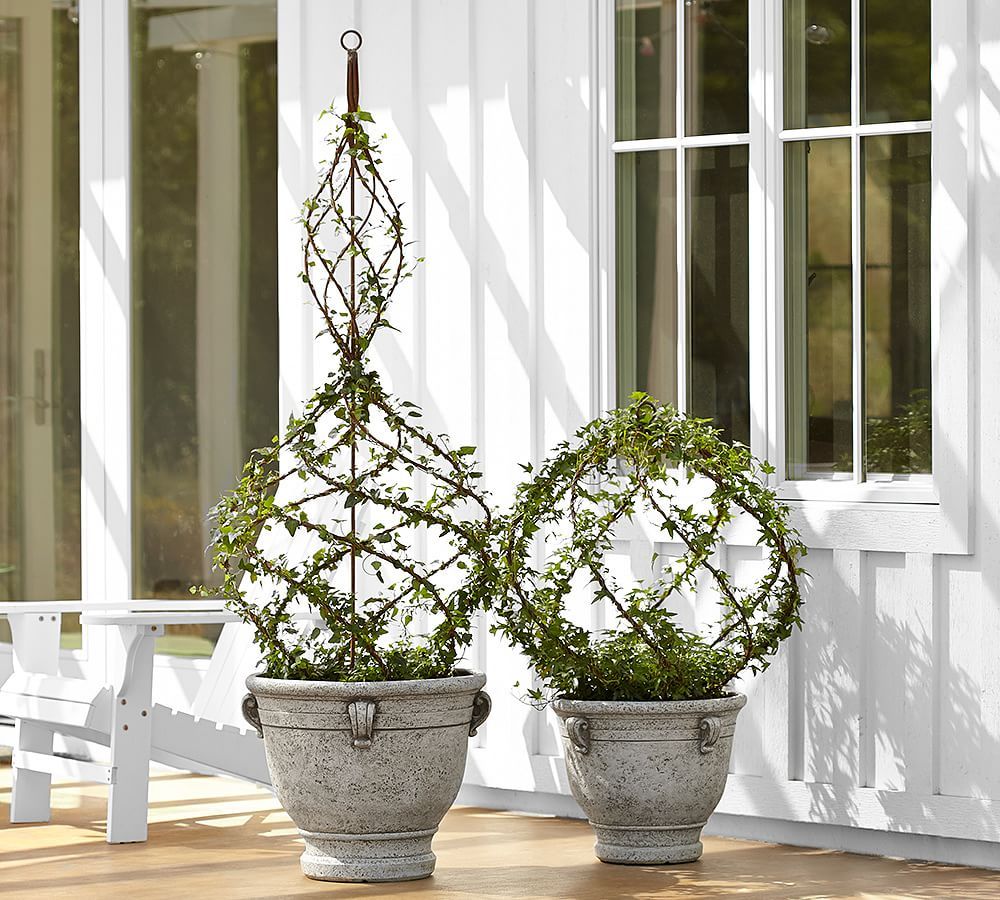Topiary frames allow you to shape plants into geometric or animal shapes, adding unique structure and interest to your garden. While you can use a range of plants, certain ones work especially well for topiary frames. Choosing the right plants ensures you can maintain the desired shape without constant pruning and trimming.
What Makes a Good Plant for Topiary Frames?
The ideal plants for topiary frames share certain characteristics that make shaping and upkeep easier
- Small dense leaves that allow for detail and definition in the topiary shape. Large or sparse leaves make it hard to achieve clean lines.
- Slow, compact growth. Fast-growing plants require frequent trimming to maintain the topiary shape.
- Evergreen foliage. Plants that retain leaves year-round preserve the look of your topiary frames.
- Flexible branches that can be trained around the frame. Brittle branches are prone to snapping.
- Pest and disease resistance. Healthy plants keep their shape better.
- Tolerance for regular pruning and shaping. Topiary plants need occasional trimming.
6 Great Options for Topiary Frames
Here are some of the top plants to consider for topiary frames:
1. Boxwood
With small evergreen leaves, boxwood (Buxus) is the quintessential classic for topiary frames. It handles shearing very well. There are over 90 boxwood species and cultivars to choose from. Common types like English boxwood and Japanese boxwood work great.
2. Privet
Many privet (Ligustrum) species and varieties make exceptional topiary plants. Their dense foliage and adaptability lend well to clipping and shaping. Chinese privet and European privet are commonly used.
3. Holly
Hollies (Ilex), especially English holly, develop thick leaves on flexible branches. They require minimal trimming once established in a topiary shape. Variegated holly adds color contrast.
4. Rosemary
For petite topiary frames, rosemary (Rosmarinus officinalis) is ideal. This woody herb tolerates clipping. Upright forms like Tuscan Blue are best shaped into miniature trees, spirals, and more.
5. Yew
With evergreen needles instead of leaves, yews (Taxus) work beautifully for looser, softer topiary shapes. Slow-growing English yew is most often used. Weeping yew forms drape gracefully from frames.
6. Ivy
Vigorous ivy (Hedera) vines cling and climb easily around wire topiary frames. Their dense foliage fills shapes rapidly. English ivy is the most popular, but variegated ivies add color. Limit trimming to control growth.
Other Plants that Work for Topiary
Beyond the most common options, many other plants can be used:
- Arborvitae – Dense evergreen foliage suits cone and spiral shapes.
- Brush cherry – Glossy oval leaves trim into round forms.
- Camellia – Shiny leaves and showy blooms shape into lollipops.
- Euonymus – Compact evergreen varieties shape well. Offers variegated foliage.
- Jasmine – Fast-growing vine quickly covers frames. Provides fragrant flowers.
- Juniper – Soft needles work for loose, flowing shapes.
- Laurus – Aromatic bay laurel leaves trim into standards and spheres.
- Myrtle – Neat leaves and aromatic flowers on this Mediterranean shrub.
- Osmanthus – Holly-like evergreen tolerates shaping into hedges and cones.
Best Practices for Planting and Caring for Topiary Frames
Follow these tips to get the most out of your topiary frames:
- Select young, flexible plants that will adapt to the frame as they grow.
- Plant in fertile, well-draining soil amended with compost or manure.
- Water regularly until plants establish. Topiaries require less water once mature.
- Apply balanced fertilizer in spring to encourage new growth for shaping.
- Let plants establish for 1-2 years before meticulous shaping begins.
- Trim frequently in the growing season to maintain desired silhouette.
- Prune lightly to avoid going from full to sparse; subtle snips only.
- Shape when branches are pliable; avoid trimming in winter.
- Remove inward-facing growth so outer shape remains full.
- Monitor for pests like leaf miners, scale, and caterpillars.
- Prevent fungal diseases like root rot with proper drainage and airflow.
Fun Ways to Use Topiary Frames
Topiary frames allow you to unleash your creativity! Here are some ideas:
- Accent the front door with matching spiral or cone topiaries in containers.
- Frame a garden gate or archway with shaped evergreens or ivy-covered columns.
- Create living garden sculptures – animals, shapes, spirals, even words or names.
- Design a focal point container with thrilling thriller topiaries among fillers and spillers.
- Craft miniature topiary bonsai trees on tabletops or in dish gardens.
- Line a path, border, or parterre garden with boxwood or privet globes.
- Shape fruit trees like citrus into standards, spirals, or espaliers on walls.
Let your imagination run wild when planning your topiary frames – the possibilities are endless! Just be sure to select suitable plants and care for them properly. With patience and practice, you can achieve striking topiary masterpieces.
Taking its time – slower growing topiary-friendly plants
Box-leafed Privet (Ligustrum Delavayanum)
If you want long-lasting topiary and don’t mind waiting for the best results, this is the plant for you. It takes a while to reach its full potential, but after one growing season, it looks great and fluffy. This is a small, evergreen bush with dark green, oval leaves and small white flowers in the spring. The flowers are followed by blue-black berries. This is a great choice for custom topiaries because it is strong and easy to weave onto wire frames. You can also buy it in stock in nice classic topiary shapes.
Read our guide for more information on proper care for your topiary.


Best Plants for Topiary
FAQ
What do you fill a topiary frame with?
What is the best vine for topiary?
- The Ultimate Guide to Growing Strawberries in Raised Beds - August 8, 2025
- No-Dig Garden Beds: The Easiest Way to Grow a Beautiful Garden - August 6, 2025
- How to Protect and Preserve Wood for Raised Garden Beds - August 6, 2025

